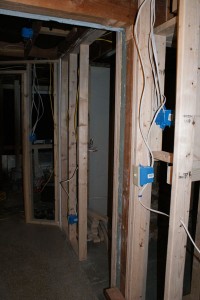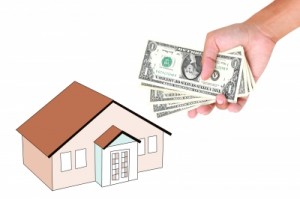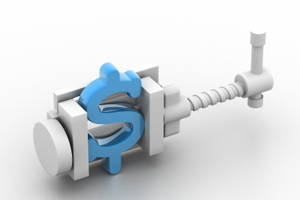We have the opportunity add a basement apartment in our home. Does it make any sense?
Longtime readers might recall that we kicked off a pretty significant basement remodel last year. We knew it was an inevitable future project, but we hadn’t wanted to start while we had such a little kid running around.
When my wife decided to change jobs, she ended up with some time off before starting the new job. An opportunity to have someone watch Pretired Baby while I smashed drywall was something that couldn’t be wasted. So I headed downstairs and grabbed my hammer.
As always, we underestimated how much time the project would take, mostly this time because we didn’t really figure in the time I’d have to keep things quiet for naptime. And because the scope kept expanding.
As we got deeper into the project, an idea that we’d talked about many times began to look increasingly realistic. The idea: add a basement apartment.
I talked quite awhile back about how we bought too much house when we moved here. We had specific things we were looking for and the size of the house wasn’t much of a consideration at the time. Although we love our house, I have to admit buying it was a significant mistake. A cheaper, more appropriately sized home would have been a smarter move. In fact, the extra amount we spent on this house is right about the same amount I currently need to declare myself officially pretired. Obviously if we were to downsize at some point (something that could still happen someday), I could declare myself financially free and be done with it. If we stay here, I will likely need to go back and bank a few more years of salary to put myself over the top.
Or is there another option? Could I downsize in-place? Let’s examine the situation.
- Total house square footage: 2,500, split evenly upstairs and downstairs.
- Upstairs layout: three bedrooms, one bathroom, dining room, kitchen. Bathroom is tiny.
- Downstairs layout: One bathroom, which will be nicer than the upstairs bathroom when done, two bedrooms (One is tiny — only technically a bedroom, but would work for a kid. The other is currently planned as an office and has a fireplace in the room and no closet yet.) There is an awkward entry area that would likely be a junk-collecting area and there is a large open room that would work nicely as a kitchen, but is currently planned as an exercise room. The laundry is also downstairs.
- Our mortgage situation: Regular readers already know all about this, but the short story is I’ve paid off my portion of the mortgage to prepare for staying home with Pretired Baby. My wife now owes about $90,000 on her half, with about seven years until the loan matures. Her payment is around $1,500. Zillow puts the current value at $650,000. Appreciation was 11 percent and 14 percent the last two years, so if the market stays hot, we gain about $50,000 or so a year in value.
- Other bills: Our core bills are around $1,600/month, so $800 each. We’ll call it $1,000 each to include some occasional splurges.
- Potential rental income: We could easily get $800 for the space, potentially up to $1,000. While we’re daydreaming, it’s conceivable we could double that or even triple it if we went the VRBO route instead, although that would probably only be the high season, so likely we’d average back to the $1,000/month, especially once the extra tax and other expenses are considered.
That’s the big picture. So should we add a basement apartment or just finish up the space and enjoy it? I’m really not sure which way to go.
Yes, we should build a basement apartment:
- More money is more money. Why wouldn’t we go get more since we’re already in mid-remodel anyway?
- We’re not really using the space currently and things seem fine. We do have some things stored downstairs but that’d be a minor issue.
- The extra money could essentially cover a nice chunk of our bills. If we brought in $1,000/month, we’d only need $500 each going forward. Appealing! And $1,000/month is about what my fourplex produced with a lot of hassle. This would be an easier way to get the same cashflow.
No, a basement apartment is a terrible idea:
- Do we really want someone else living in our house? What if they’re nuts? We have a young child in the house. Is it safe?
- There is extra work, so more scope creep. I’d have to run an additional drainline under the concrete floor. I’d also have to add laundry upstairs and while I sort of have a space for it, it’s awkward and would actually cause some storage issues.
- Back to landlord hassles. I’ve really been enjoying not being a landlord the last few months. It’d really suck to go back.
- We’d have to be considerate neighbors and keep the noise down. With a toddler running around and crying a few times every hour, that may not be possible. One of the best things about living in a house is that you can make lots of noise without annoying your neighbors.
- Is $12,000 a year really worth it? We’re appreciating at four times that amount right now. I don’t mean to act like that’s pocket change, but in the grand scheme of things that amount of money doesn’t seem to compare favorably to the negatives.
As far as the extra works goes, the thing that scares me the most is adding laundry upstairs. Everything is possible, but the hassle and expense of that is off-putting. The biggest negative overall is just giving up part of our house — having a stranger around all the time. Maybe we’d get lucky and manage to rent to a busy airplane pilot who is gone all the time, but odds of that are slim. For $1,000/month, it just doesn’t seem worth it. If we were reliably bringing in $3,000/month or more, it’d be irresistibly doable.
But maybe I’m wrong. Small amounts of money do add up over time and this would greatly lower our overhead on a percentage basis. By effectively lowering my overhead to around $500/month, my existing pretirement fund would enough to cover all my bills, essentially rendering me essentially financially free without working another day of my life. (Naturally we probably wouldn’t want someone living in our house the rest of our lives, but presumably, we’d eventually sell and downsize so the rental phase would act as a bridge until the market ripened to where it became time to sell and move, at which time I’d have additional pretirement funds available.)
So on one hand, more work, more short-term expense and a major hit to our comfortable, private lives. On the other hand, I wouldn’t need to think about working ever again. Ever again. That sounds pretty sweet, too.
What do you think? We should add a basement apartment? What would you do?




